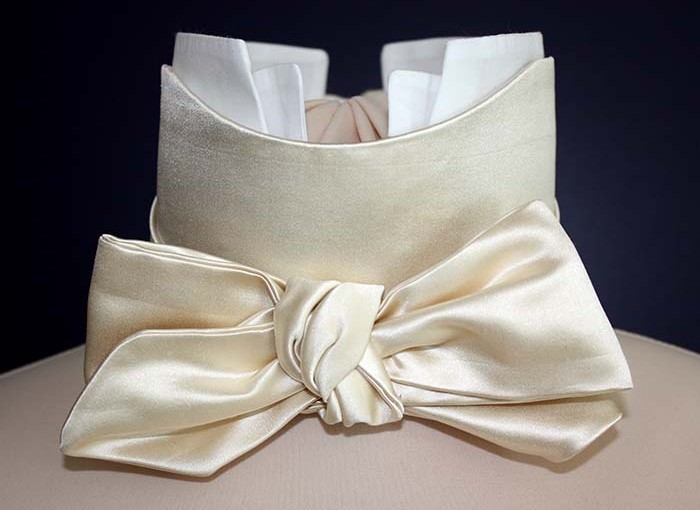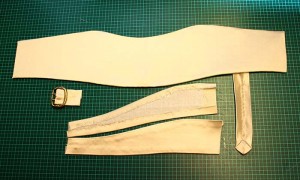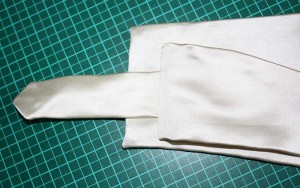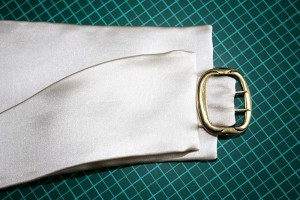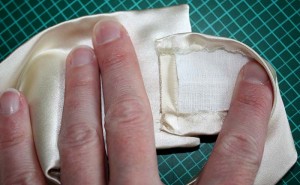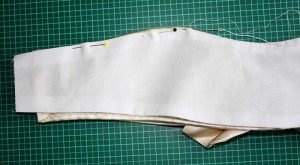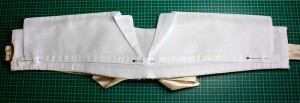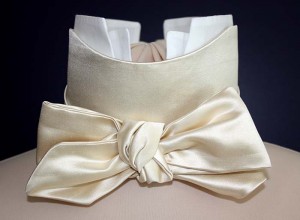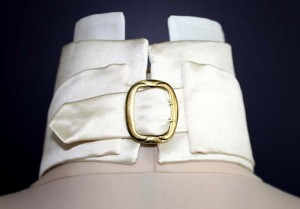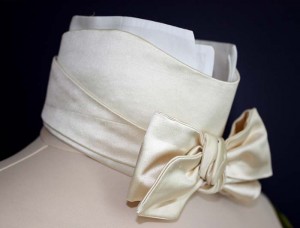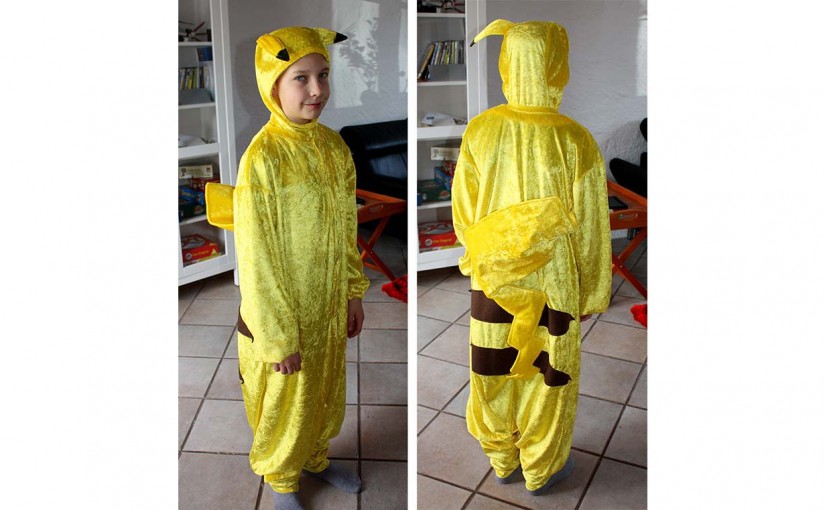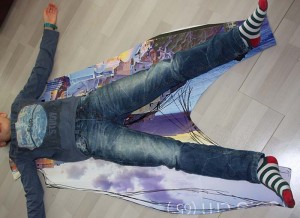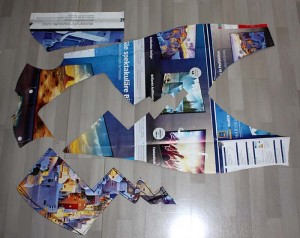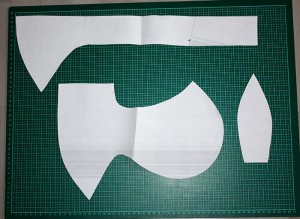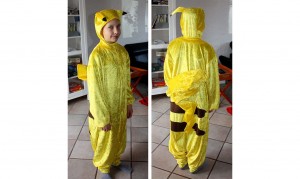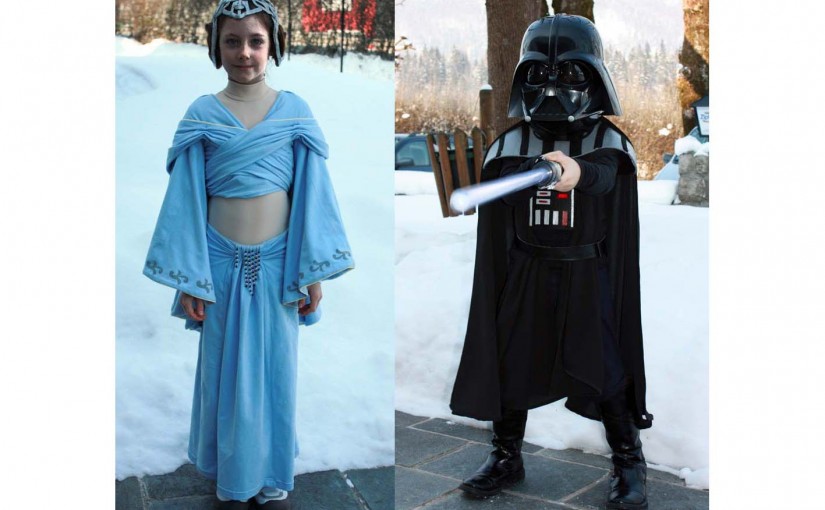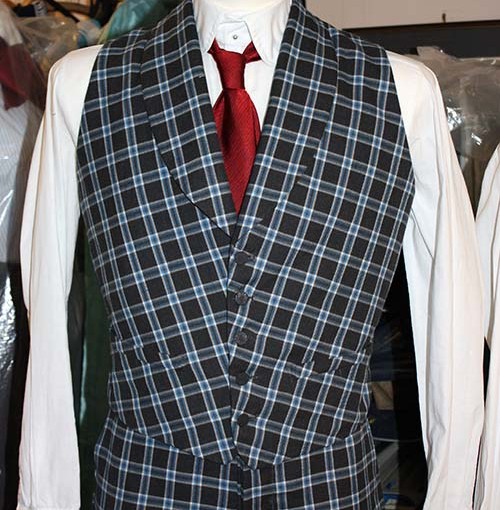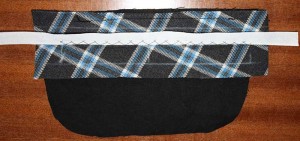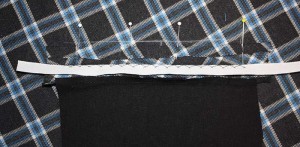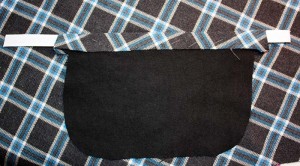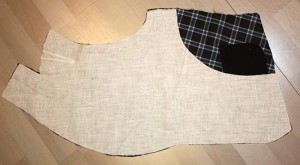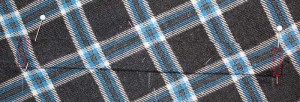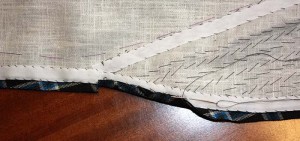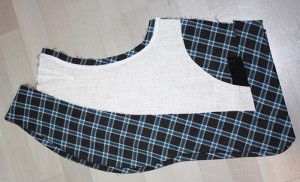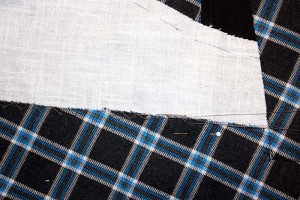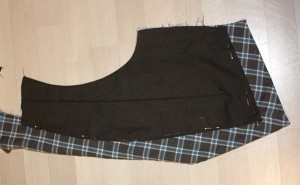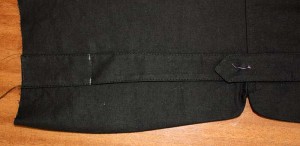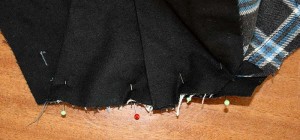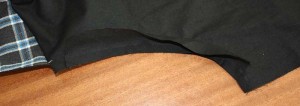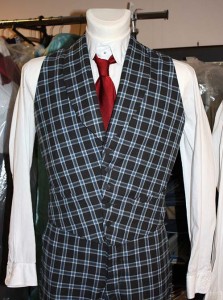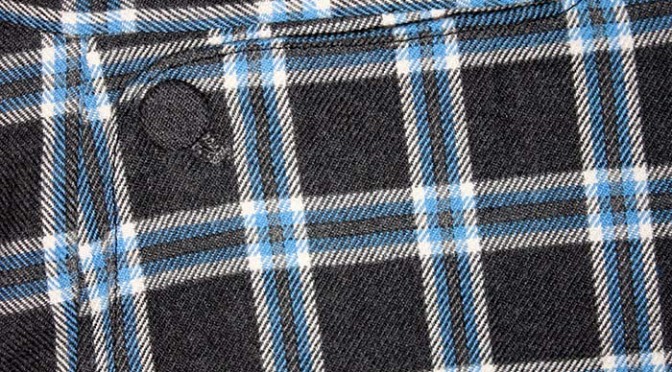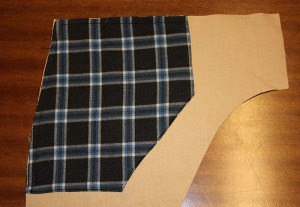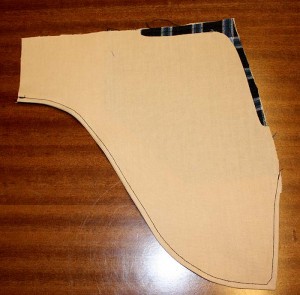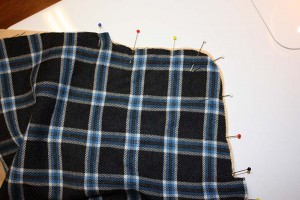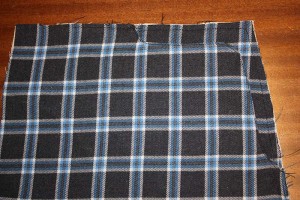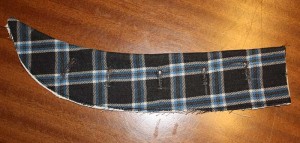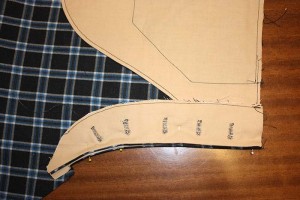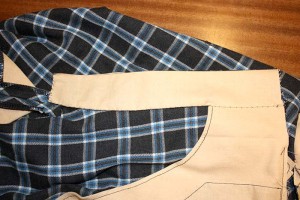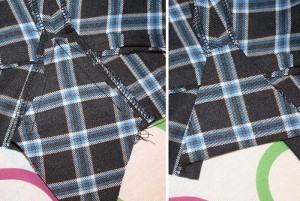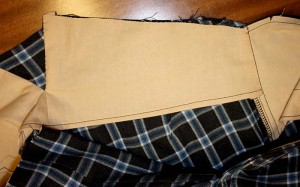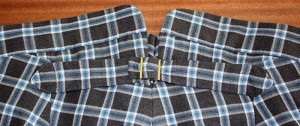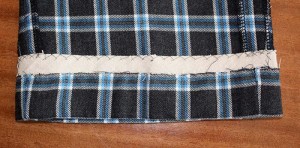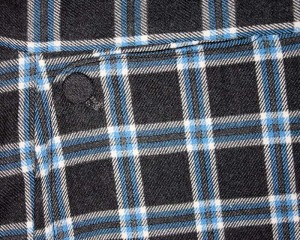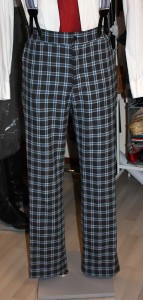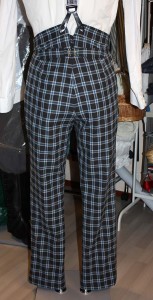During the last months I sewed some 1830´s clothes for my husband. He got trousers, skirts, waistcoats, a Frock Coat and a Tail Coat. To be properly dresses just a stock collar was missing. I´ll show you how I made it from silk sateen fabric and inlay, all fabrics came from stock except the buckle.
First, I cut two collar pieces from the inlay, one on the straight, one on the bias. As it was a fusible inlay I didn´t had to pad stitch the pieces together, just fuse with the iron. Now it had the desired stiffness for my collar. Then I covered the inlay with the silk sateen using a catch stitch on the inside.
Next was to cover two pieces of linen for the belts with the sateen and prepare two straps for the buckle on the back.
I attached the belts to the collar with the straps for the buckle underneath.
I placed the belt pieces on top of the collar and basted them to the collar on the center front. Think of additional width needed for the belt when the collar lays around the neck.
For the bow, I lined up the two straps, right sides together, and sewed around. I left an opening and turned inside out after trimming the seam allowances. I pressed the bow strap carefully and closed the opening with some invisible stitches. I made a bow, arranged the loops and ends carefully and fixed everything with some stitches. Then I attached the bow to the collar.
I covered the back of the collar with lining fabric, attached with a felling stitch.
For the inside collar I lined up the collar pieces, right sides together, sewed and trimmed back the seam allowances. I turned the inside out and pressed. I lined up the straps for the collar stand, right sides together. Placed the collar pieces between, leaving a gap at the center front, and stitched along short and upper edges. I trimmed back the seam allowances, turned inside out and pressed. I turned in the seam allowances of the bottom edge of the collar stand and stitched along the bottom edge.
At least I starched and pressed the inside collar, folded the front edges and basted to the inside of the stock collar.
You can download the pattern for the stock collar here, have fun with sewing:

